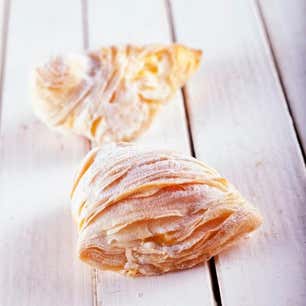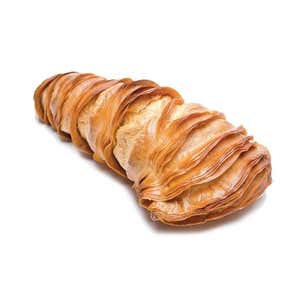Italian Desserts for your aperitivo
Italian cuisine is known for its savory dishes, but it's also home to some of the most delicious desserts in the world. From Tiramisu to Cannoli, Italian desserts have taken over the world with their sweet and savory flavors. In this article, we will explore two traditional Italian desserts: Neapolitan Sfogliatelle and Sweet Lobster Tail. We will delve into their history, ingredients, and cooking methods. So, grab a cup of coffee and let's dive in.
The history of Neapolitan Sfogliatelle
Neapolitan Sfogliatelle is a traditional Italian pastry that originated in Naples, Italy, in the 18th century. The pastry was invented by nuns in the Santa Rosa convent, who used to make them for special occasions. The nuns' recipe was eventually passed down to the Amato family, who started selling them commercially in the 19th century.
Neapolitan Sfogliatelle is made of three layers of dough that are filled with a sweet ricotta filling. The dough is made of flour, water, and lard. The filling is made of ricotta cheese, sugar, cinnamon, and lemon zest.
Making Neapolitan Sfogliatelle is a labor-intensive process that requires skill and patience. The dough is rolled out into thin layers, and the filling is spooned onto each layer. The layers are then folded and rolled into a shell shape. The pastry is baked in the oven until it is golden brown.
The delicious Sweet Lobster Tail
Sweet Lobster Tail, also known as "Coda di Aragosta," is a traditional Italian dessert that originates from Sicily. It is believed to have been created by a pastry chef in Palermo in the early 1900s.
Sweet Lobster Tail is a sweet, flaky pastry that is filled with a creamy, custard filling. The pastry is made of flour, sugar, butter, eggs, and a pinch of salt. The filling is made of pastry cream, which comprises milk, sugar, egg yolks, cornstarch, and vanilla.
Making Sweet Lobster Tail is a complex process that requires skill and attention to detail. The dough is prepared by mixing flour, sugar, eggs, butter, and salt together. The dough is then shaped into a long, thin tail and baked in the oven until it turns golden brown. The pastry is then filled with pastry cream and dusted with powdered sugar.



